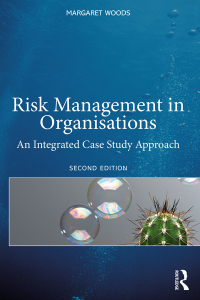Question
Applying New Lease Accounting Standards for Operating Leases On January 1 of the current year, CCH Corporation entered into the following lease contract. Based on
Applying New Lease Accounting Standards for Operating Leases On January 1 of the current year, CCH Corporation entered into the following lease contract. Based on the facts, CCH Corporation classifies the lease as an operating lease. The company has a 5% cost of debt capital.
- Leased asset: Office space.
- Lease term: 5 years.
- Annual lease payment: $207,877 due at each year-end.
- Upfront fees: $10,000 paid in cash.
Required Note: For the following questions, round your answers to the nearest whole dollar. a. Explain how the facts support the classification of the lease as an operating lease. AnswerValue of the leased asset is being conveyed to CCHValue of the leased asset is not being conveyed to CCH b. Determine the amount of the lease liability that CCH will add to its balance sheet at the inception of the lease. $Answer c. 1. What amount will be added to the balance sheet as an asset? $Answer 2. What will CCH Corporation call the asset on the balance sheet? AnswerApartment buildingLease assetOperating assetRight-of-use asset d. Prepare a lease amortization schedule that shows the interest and principal portions of each lease payment.
| Implicit Interest | Lease Amortization | Lease Liability, End | ||
|---|---|---|---|---|
| Lease Liability, | (Lease Liability, | (Lease payment | (Lease Liability, Start | |
| Year | Start | Start x 5%) | Implicit interest) | Lease Amortization) |
| 1 | Answer | Answer | Answer | Answer |
| 2 | Answer | Answer | Answer | Answer |
| 3 | Answer | Answer | Answer | Answer |
| 4 | Answer | Answer | Answer | Answer |
| 5 | Answer | Answer | Answer | Answer |
e. Use the financial statement effects template to record (a) the lease inception and (b) lease payment for year one and for (c) year two of the lease term. Also show the asset and lease amortization for those same two years. Note: For each account category, indicate the appropriate account name. Enter "N/A" for any account category that is not used for a given transaction. Note: Indicate a decrease in an account category by including a negative sign with the amount.
| ($ in millions) | Balance Sheet | Income Statement | ||||||||||||
|---|---|---|---|---|---|---|---|---|---|---|---|---|---|---|
| Transaction | Cash | + | Noncash Assets | = | Liabilities | + | Contrib. Capital | + | Earned | Revenues | Expenses | = | Net | |
| Asset | Capital | Income | ||||||||||||
| (a) | Answer | Answer | = | Answer | Answer | Answer | Answer | Answer | = | Answer | ||||
| AnswerAccounts payableCashLease assetLease liabilityRent expenseRent revenueRetained earningsRight-of-use assetN/A | AnswerAccounts payableCashLease assetLease liabilityRent expenseRent revenueRetained earningsRight-of-use assetN/A | AnswerAccounts payableCashLease assetLease liabilityRent expenseRent revenueRetained earningsRight-of-use assetN/A | AnswerAccounts payableCashLease assetLease liabilityRent expenseRent revenueRetained earningsRight-of-use assetN/A | AnswerAccounts payableCashLease assetLease liabilityRent expenseRent revenueRetained earningsRight-of-use assetN/A | AnswerAccounts payableCashLease assetLease liabilityRent expenseRent revenueRetained earningsRight-of-use assetN/A | AnswerAccounts payableCashLease assetLease liabilityRent expenseRent revenueRetained earningsRight-of-use assetN/A | ||||||||
| (b) | Answer | Answer | = | Answer | Answer | Answer | Answer | Answer | = | Answer | ||||
| AnswerAccounts payableCashLease assetLease liabilityRent expenseRent revenueRetained earningsRight-of-use assetN/A | AnswerAccounts payableCashLease assetLease liabilityRent expenseRent revenueRetained earningsRight-of-use assetN/A | AnswerAccounts payableCashLease assetLease liabilityRent expenseRent revenueRetained earningsRight-of-use assetN/A | AnswerAccounts payableCashLease assetLease liabilityRent expenseRent revenueRetained earningsRight-of-use assetN/A | AnswerAccounts payableCashLease assetLease liabilityRent expenseRent revenueRetained earningsRight-of-use assetN/A | AnswerAccounts payableCashLease assetLease liabilityRent expenseRent revenueRetained earningsRight-of-use assetN/A | AnswerAccounts payableCashLease assetLease liabilityRent expenseRent revenueRetained earningsRight-of-use assetN/A | ||||||||
| (c) | Answer | Answer | = | Answer | Answer | Answer | Answer | Answer | = | Answer | ||||
| AnswerAccounts payableCashLease assetLease liabilityRent expenseRent revenueRetained earningsRight-of-use assetN/A | AnswerAccounts payableCashLease assetLease liabilityRent expenseRent revenueRetained earningsRight-of-use assetN/A | AnswerAccounts payableCashLease assetLease liabilityRent expenseRent revenueRetained earningsRight-of-use assetN/A | AnswerAccounts payableCashLease assetLease liabilityRent expenseRent revenueRetained earningsRight-of-use assetN/A | AnswerAccounts payableCashLease assetLease liabilityRent expenseRent revenueRetained earningsRight-of-use assetN/A | AnswerAccounts payableCashLease assetLease liabilityRent expenseRent revenueRetained earningsRight-of-use assetN/A | AnswerAccounts payableCashLease assetLease liabilityRent expenseRent revenueRetained earningsRight-of-use assetN/A |
f. At the end of the current year, what additional disclosure would CCH make in its footnotes pertaining to the four remaining lease payments?
| December 2020 | |
|---|---|
| 2021 | Answer |
| 2022 | Answer |
| 2023 | Answer |
| 2024 | Answer |
| 2025 | Answer |
| Thereafter | Answer |
| Total undiscontinued lease payments | Answer |
| Imputed interest | Answer |
| Total Operating lease liability | Answer |
| Weighted average remaining lease life in years | Answer |
| Weighted average discount rate | Answer |
Please answer all parts of the question.
PreviousSave AnswersFinish attempt ...
Step by Step Solution
There are 3 Steps involved in it
Step: 1

Get Instant Access to Expert-Tailored Solutions
See step-by-step solutions with expert insights and AI powered tools for academic success
Step: 2

Step: 3

Ace Your Homework with AI
Get the answers you need in no time with our AI-driven, step-by-step assistance
Get Started


